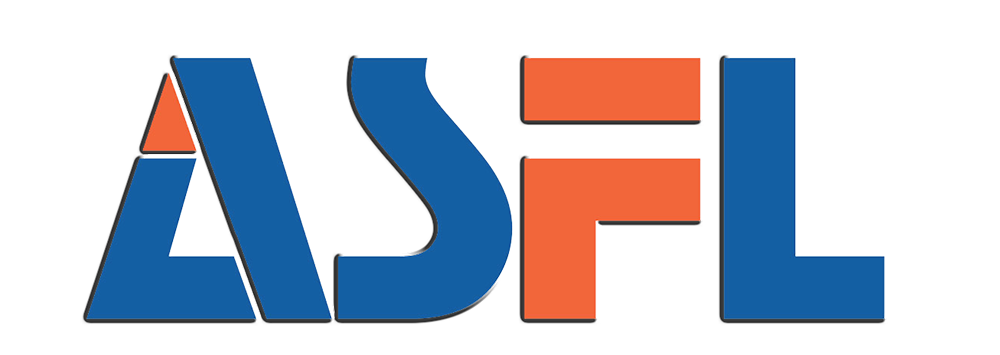Automation's Role in Modern Filling Machine Operations
Defining Automated Liquid Bottle Filling Systems
Automated liquid bottle filling systems integrate cutting-edge technology into production lines to significantly enhance efficiency. These systems are engineered for high-speed operations that maintain exceptional accuracy, utilizing advanced sensors and control software to ensure precise liquid measurements and drastically reduce human error. The surge in demand for consistent product quality and faster production rates is a key driver behind the projected growth in the automated filling machine market. With advancements like AI-powered smart sensors, these systems optimize filling precision, deliver uniform product quality, and minimize material waste, creating not only cost-effective but also environmentally friendly production processes.
Core Components of Filling and Capping Machine Integration
Filling and capping machines are integrated with key components such as filling heads, capping mechanisms, and conveyor systems to streamline packaging processes. These components work synchronously to transition rapidly and seamlessly between filling and capping, maximizing throughput and minimizing downtime. By leveraging automation technologies, like robotic capping systems, companies can significantly cut operational costs while boosting speed and efficiency in production lines. The integration of these machines represents a crucial step toward optimal resource usage and productivity, allowing manufacturers to meet high demand without sacrificing product quality or reliability.
Efficiency Gains Through Automated Liquid Filling Lines
Precision Measurement in Automatic Liquid Dispensing
Precision in liquid dispensing is crucial for maintaining quality and minimizing waste in production lines. Automatic liquid dispensing systems are engineered to ensure exceptional precision in fill levels, which reduces product waste and enhances customer satisfaction. These systems employ flow meters and volume control technology to achieve high accuracy, typically within ±0.5%. This ensures that each product, whether it's a beverage or a cosmetic item, is consistently filled to the desired level, meeting both industry standards and customer expectations.
Throughput Optimization with Smart Conveyor Systems
Smart conveyor systems have revolutionized production lines by optimizing throughput and reducing downtime. These systems utilize real-time data analytics to manage the production flow efficiently. By employing artificial intelligence (AI) and machine learning, smart conveyor systems can adaptively respond to production needs, thus increasing overall output efficiency. The intelligent adjustments they make in real-time can significantly enhance the productivity of automated liquid filling lines, ensuring that production is continuous and bottlenecks are minimized.
Case Study: 40% Productivity Increase in Beverage Sector
A leading beverage company provided a compelling case study on the benefits of automation in filling machines. Following the implementation of an automated filling line equipped with cutting-edge technology, the company reported a remarkable 40% increase in productivity. This substantial increase underscores the operational savings and efficiency improvements that can be achieved through strategic automation investments. The case study highlights the importance of integrating state-of-the-art equipment to maintain a competitive edge in the fast-paced beverage sector.
Advanced Machine Types Revolutionizing Packaging
High-Speed Liquid Filling Machine Configurations
High-speed configurations of liquid filling machines have revolutionized bottleneck times, enabling manufacturers to achieve output rates of up to 600 bottles per minute. This significant evolution in machine speed is crucial in addressing the increasing consumer demand and maintaining a competitive edge in rapidly growing markets. Moreover, these machines provide consistency and reliability, which are essential for manufacturers seeking to optimize their production processes.
- The integration of advanced technology in these machines supports sustainable efficiencies.
- These configurations are vital for industries aiming to expand quickly without compromising quality.
- Manufacturers can leverage these machines to streamline production, thereby reducing operational costs.
Multi-Purpose Filling Line Adaptability
Multi-purpose filling lines provide adaptability to accommodate various container types and sizes, catering specifically to brands with diverse product lines. This adaptability is crucial as it reduces the necessity for separate machines, enhancing the overall production efficiency while optimizing space utilization. The capability to handle multiple formats ensures flexible production setups that can rapidly shift between different product requirements without significant downtime.
- Adapting swiftly to market changes enhances brand performance.
- These lines support diverse packaging needs within a single production system.
- Enhanced flexibility leads to increased throughput, reducing operational bottlenecks.
Pharmaceutical-Grade Aseptic Filling Solutions
Pharmaceutical-grade aseptic filling solutions are designed to meet stringent regulatory standards, ensuring the highest levels of product integrity and safety. They employ sophisticated sterilization methods, such as steam and hydrogen peroxide, to maintain these standards, which are crucial for the production of sensitive pharmaceutical products. These solutions provide an effective platform for manufacturers focused on quality control and product efficacy.
- Ensures integrity through comprehensive sterilization techniques.
- Facilitates compliance with stricter pharmaceutical regulations.
- Protects product quality throughout the filling process.
Incorporating specific configurations, adaptable lines, and aseptic solutions can substantially improve productivity across various sectors, thus playing a critical role in revolutionizing the packaging industry.
Sustainability Through Automated Process Control
Material Waste Reduction Strategies
Material waste reduction is a pivotal focus for industries striving for sustainability in their packaging processes. Automated process control systems play a crucial role by incorporating real-time monitoring to identify and control excess material usage. For instance, these systems can detect and rectify overfilling in liquid bottle filling machines, thereby conserving resources. Implementing strategies like reclaiming spillage has proven effective in cutting down material costs by an average of 15%, showcasing significant economic and environmental benefits. By optimizing material consumption, businesses not only lower costs but also contribute to environmental sustainability, meeting both ecological and economic goals.
Energy-Efficient Machine Learning Algorithms
Energy efficiency is increasingly achieved through the use of advanced machine learning algorithms, which optimize energy consumption in automated manufacturing systems. These algorithms analyze production data to fine-tune operational parameters, reducing energy use by as much as 25%. By deploying such predictive analytics, companies enhance equipment lifespan and reduce maintenance needs. This approach not only slashes operational costs but also fosters sustainable manufacturing practices, aligning with global sustainability objectives. Incorporating machine learning not only improves financial performance but also positions companies as leaders in responsible production.
Dimensional Weight Optimization for Shipping
Dimensional weight optimization offers a strategic solution for reducing shipping costs and environmental impact. Through efficient packaging that maximizes the use of space, companies can minimize the volume of shipments and, consequently, the fuel required for transportation. This practice has been shown to lower shipping costs by approximately 18%. By ensuring the packaging is designed to meet dimensional weight requirements, businesses not only save on transportation fees but also lessen their carbon footprint, contributing to a more sustainable supply chain and reinforcing their commitment to ecological responsibility.
Implementation Challenges and Industry Solutions
Balancing Upfront Costs vs Long-Term ROI
Investing in automated systems, such as a liquid bottle filling machine, involves significant upfront costs, which can deter companies from transitioning to such technologies. Despite this initial financial burden, the long-term return on investment (ROI) often outweighs these costs significantly. For instance, adopting automated liquid filling systems can lead to reduced labor and operational costs, with companies typically seeing a return on investment within 3 to 5 years. This makes the initial investment more justifiable as it ensures operational efficiency over time.
Workforce Adaptation to Liquid Filling Machine Supplier Standards
The transition to automated systems necessitates training and re-skilling the workforce to utilize new technologies effectively. Ensuring that employees can adapt to the changes brought about by suppliers of liquid filling machines is crucial for maximizing the efficiency of these systems. Implementing continuous education programs fosters a culture of innovation and adaptability within the workforce. These programs not only enhance the employees' skills in mastering the automated systems but also help build a dynamic work environment that can swiftly adapt to future technological advancements.
IoT Integration in Existing Production Environments
Integrating Internet of Things (IoT) technology into existing production environments offers enhanced data analytics and operational insights, leading to significant efficiency gains. Such integration allows manufacturers to monitor machine performance in real-time, thereby enabling predictive maintenance. However, challenges such as system compatibility and data security require careful consideration and strategic planning. Addressing these challenges involves having a robust plan for data integration and ensuring cybersecurity measures are in place to protect sensitive information and maintain seamless production operations.
Future Trends in Filling Machine Automation
AI-Driven Predictive Maintenance Systems
AI-driven predictive maintenance systems are revolutionizing the operation of filling and capping machines. These systems utilize advanced algorithms to predict potential failures and maintenance needs, thereby significantly reducing the chances of unexpected downtime. By proactively addressing issues, companies can maintain steady production without interruptions. Organizations implementing such systems have reported up to a 30% reduction in maintenance costs, making this technology not only a strategic investment but also a financially beneficial one.
Blockchain-Enabled Supply Chain Transparency
The integration of blockchain technology in the supply chain of liquid bottle filling machines brings a new level of transparency and traceability. Blockchain records every transaction involved in the journey from manufacturer to consumer, ensuring that every step is documented and verifiable. This enhances trust and accountability, crucial elements in today’s market. For the filling machine industry, adopting blockchain can revolutionize operations by ensuring authenticity and quality, which are vital in sectors like pharmaceuticals and food and beverage.
5G-Connected Smart Factory Ecosystems
With the advent of 5G technology, factories producing automatic liquid filling machines can expect significant advancements in connectivity and process efficiency. 5G enables unprecedented data transfer speeds, enhancing real-time analytics and facilitating the integration of various smart devices across manufacturing ecosystems. This communication speed allows for seamless operation and optimization of automated systems, leading to increased productivity and reduced process inefficiencies. As smart factory ecosystems expand, the role of 5G-connected technology becomes increasingly central to optimizing liquid filling lines.
Table of Contents
- Automation's Role in Modern Filling Machine Operations
- Defining Automated Liquid Bottle Filling Systems
- Core Components of Filling and Capping Machine Integration
- Efficiency Gains Through Automated Liquid Filling Lines
- Precision Measurement in Automatic Liquid Dispensing
- Throughput Optimization with Smart Conveyor Systems
- Case Study: 40% Productivity Increase in Beverage Sector
- Advanced Machine Types Revolutionizing Packaging
- High-Speed Liquid Filling Machine Configurations
- Multi-Purpose Filling Line Adaptability
- Pharmaceutical-Grade Aseptic Filling Solutions
- Sustainability Through Automated Process Control
- Material Waste Reduction Strategies
- Energy-Efficient Machine Learning Algorithms
- Dimensional Weight Optimization for Shipping
- Implementation Challenges and Industry Solutions
- Balancing Upfront Costs vs Long-Term ROI
- Workforce Adaptation to Liquid Filling Machine Supplier Standards
- IoT Integration in Existing Production Environments
- Future Trends in Filling Machine Automation
- AI-Driven Predictive Maintenance Systems
- Blockchain-Enabled Supply Chain Transparency
- 5G-Connected Smart Factory Ecosystems

 EN
EN
 AR
AR
 FR
FR
 DE
DE
 PT
PT
 RU
RU
 ES
ES
 TR
TR




